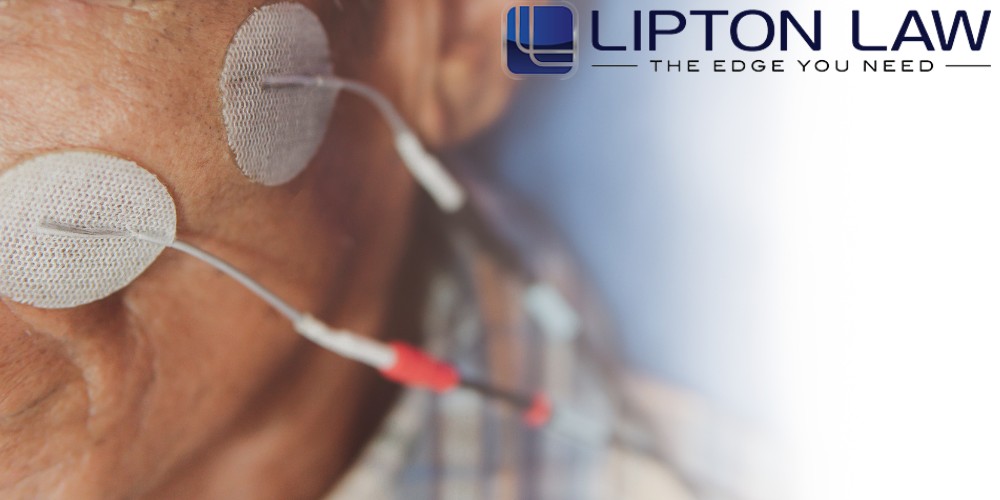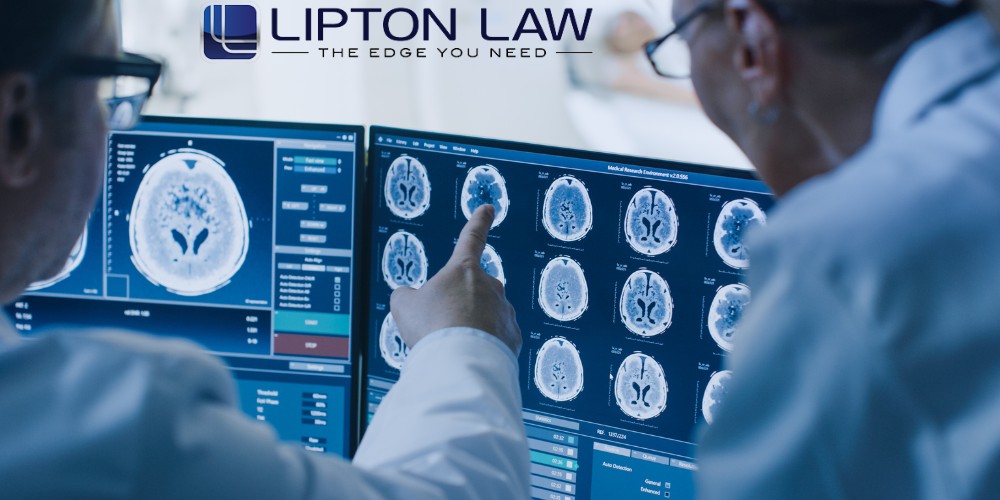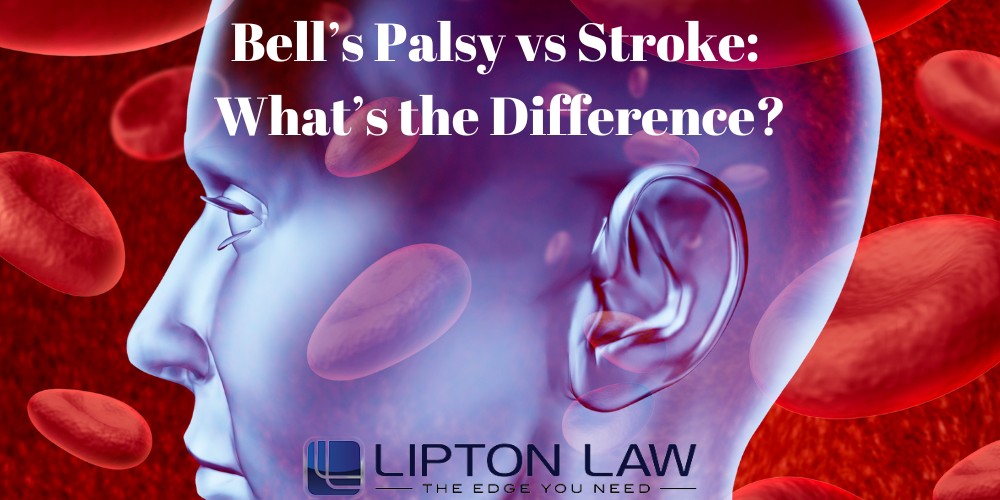What Is Bell’s Palsy?
Bell’s Palsy is a neurological condition that causes temporary facial paralysis or weakness on one side of the face. One of the facial nerves that control the muscles in your face becomes injured or stops working correctly. Unlike a stroke, Bell’s palsy is generally linked to damage to the facial nerves rather than a blood clot.
Causes of Bell’s Palsy
The cause of Bell’s Palsy is unknown. It is believed that it may be caused by inflammation that is directed to the body’s immune system against the nerve controlling facial movement. Bell’s Palsy can sometimes be associated with the following:
- Diabetes
- High blood pressure
- Injury
- Toxins
- Lyme disease
- Guillain-Barré syndrome
- Sarcoidosis
- Myasthenia gravis
- Multiple sclerosis
- Infection, especially after a viral infection with the Herpes simplex virus
- Middle ear infection
- HIV/AIDs infection
Bell’s palsy can affect people of all ages, but it most commonly affects those over the age of 65 years. It can affect children under the age of 10 years and affects both males and females equally.
Symptoms of Bell’s Palsy

Bell’s palsy and stroke symptoms may seem similar initially, but they have a few key differences. More often than not, symptoms start suddenly but may take two to three days to show up. Symptoms are typically always on only one side of the face; however, in rare cases, it can affect the nerves on both sides of the face.
Before weakness is noticed, many people feel discomfort behind the ear. The face will feel stiff or pulled to one side and look abnormal. Some other signs include:
- Difficulty closing one eye
- Difficulty eating and drinking
- Drooling
- Drooping of the face, such as the eyelid or corner of the mouth
- Problems with facial nerve controls, such as when smiling or making facial expressions
- Twitching or weakness of the facial muscles
- Dry eye
- Dry mouth
- Headache
- Loss of taste
- Hypersensitivity to sound in the affected ear
- Central facial weakness
- Unilateral facial paralysis
What Is a Stroke?
A stroke is also known as a transient ischemic attack (TIA) or cerebrovascular accident that happens when the blood flow to the brain is blocked. It prevents the brain from receiving oxygen and nutrients from the blood.
Types of Strokes
Ischemic Stroke (Blood Clot)
An ischemic stroke results from an obstruction to a blood vessel supplying blood to the brain. An acute ischemic stroke specifically results in a sudden loss of blood flow to the brain, which results in a loss of neurological function. Acute ischemic strokes are more common than hemorrhagic strokes.
Hemorrhagic Stroke
Hemorrhagic strokes are caused by a weakened blood vessel that ruptures and bleeds into the brain surrounding it. According to the American Stroke Association, hemorrhagic strokes make up about 13% of stroke cases.
There are two different types of hemorrhagic strokes. They include intracerebral (within the brain) hemorrhage or subarachnoid hemorrhage. The two types of weakened blood vessels that usually cause hemorrhagic strokes include aneurysms and arteriovenous malformations (AVMs).
Transient Ischemic Attack (TIA)
A transient ischemic attack, also known as a TIA or “mini-stroke,” is a temporary blockage of blood flow to the brain. The clot will typically dissolve on its own, or it will become dislodged. Symptoms of a TIA usually only last about five minutes or less.
A TIA doesn’t cause permanent damage and is more likely to be a “warning stroke,” signaling the potential for a full-blown stroke.
Cryptogenic Stroke
A cryptogenic stroke is one that happens without a known cause. The American Stroke Association states that approximately one in three ischemic strokes are cryptogenic.
Symptoms of Strokes
Stroke symptoms are usually a sudden onset. Not everyone experiences the same stroke symptoms; however, some of the most common early signs of a stroke are:
- Numbness, weakness, or paralysis of the face, arm, or leg- typically on one side of the body. This includes facial drooping and trouble lifting an arm or leg
- Confusion
- Trouble speaking or slurred speech
- Difficulty walking or loss of balance
- Dizziness
- Severe headache
A helpful way to remember stroke signs is the acronym B.E.F.A.S.T.
B– Balance problems
E– Eyesight issues
F– Face Drooping
A– Arm Weakness
S– Speech difficulty
T– Time to call 911
A stroke can happen to anyone- any age, any time- and it’s crucial that everyone knows the warning signs.
Causes of Strokes
There are two main causes of strokes; a blocked artery or leaking or bursting of a blood vessel. An ischemic stroke happens when the brain’s blood vessels become narrowed or blocked, which results in reduced blood flow. Blocked blood vessels are a result of fatty deposits building up in the blood vessels or by blood clots or other debris that travels through the bloodstream.
A hemorrhagic stroke is caused by the rupture or leakage of a blood vessel. Brain hemorrhages can result from many conditions affecting the blood vessels. Some of the factors related to hemorrhagic strokes include:
- Uncontrolled high blood pressure
- Overtreatment of blood thinners
- Bulges at weak spots in your blood vessel walls (aneurysms)
- Trauma (such as a car accident)
- Protein deposits in blood vessel walls leading to weakness in the vessel wall
- Ischemic stroke leading to hemorrhage
Key Differences Between Bell’s Palsy vs Stroke
The biggest difference between Bell’s Palsy and a stroke has to do with brain involvement. Bell’s Palsy doesn’t affect the actual brain tissue or brain function; therefore, nothing beyond the facial nerve can be affected. If there is involvement beyond the facial nerve, it’s not Bell’s Palsy.
Some of the symptoms of Bell’s palsy and strokes are the same. Although, other symptoms are specific to one problem. Headaches, issues speaking, and drooling may be present in either situation.
If symptoms are the result of Bell’s Palsy, watch for watering from the eye on the affected side of the face, changes in taste, sensitivity to sound, and ringing in the ears. If they are the result of a stroke, watch for trouble finding words, eyes gazing in a single direction, trouble walking, and changes in vision. A stroke can also cause numbness on one side of the body or face and weakness in the extremities on one side. Weakness of the extremities and difficulty moving the tongue or eyes is never present with Bell’s Palsy symptoms.
How Are Bell’s Palsy and Strokes Diagnosed?
When diagnosing Bell’s Palsy, a doctor will examine you for any upper and lower facial muscle weakness on a single side of your face. The doctor will rule out other potential causes of facial paralysis during the exam. There are no specific lab tests to confirm the diagnosis of Bell’s Palsy. If a specific cause cannot be identified when running other tests to rule out diseases or conditions that can cause facial weakness, such as brain tumor, stroke, or Lyme disease, the condition can be diagnosed as Bell’s Palsy.
Tests for Bell’s Palsy might include electromyography (EMG) or diagnostic imaging like magnetic resonance imaging (MRI) or computed tomography (CT) scans. An EMG can help confirm if there is nerve damage present and determine the severity of the nerve involvement. Diagnostic imaging can rule out other causes of pressure on the facial nerve and can check other nerves.
A stroke will be diagnosed based on your symptoms, medical history, physical exam, and test results. Your doctor will order tests to rule out other health issues with similar symptoms and will also order diagnostic imaging to get a look at the blood vessels in your brain. Diagnostic imaging will aid in determining the type of stroke you have and where it occurred. These tests will include computed tomography (CT) or magnetic resonance imaging (MRI). Your doctor may also order blood tests, an electrocardiogram (EKG), or a lumbar puncture.

How Are Bell’s Palsy and Strokes Treated?
Treatment of Bell’s Palsy may include medications such as steroids to help reduce inflammation and swelling, antiviral agents to help increase facial functionality recovery, and analgesics such as acetaminophen or ibuprofen to relieve pain. Bell’s palsy treatment can also include physical therapy, eye protection to keep your eyes moist, and surgery to correct damage on rare occasions.
Strokes require emergency care that you may receive in a specialized unit of the hospital. Your treatment will depend on the type of stroke, how much time has passed since your symptoms started, and if you have any other medical conditions. An ischemic stroke treatment may include medications and medical procedures. Medications would include a tissue plasminogen activator (tPA) or a blood thinner if you cannot have a tPA. You may require a procedure to open the blocked arteries and restore brain blood flow. Hemorrhagic stroke treatment may require medication such as blood pressure medications or medical procedures.
Why Is It so Important for a Doctor to Correctly Diagnose a Stroke?
A stroke is a life-threatening condition that can result in permanent disability. The correct diagnosis and quick treatment of a stroke can prevent permanent brain damage and death. Misdiagnosis of a stroke may lead to permanent disability or even wrongful death for a patient.
Is a Stroke Misdiagnosis Considered Medical Malpractice?
If a doctor fails to diagnose or treat a stroke, that in itself is not considered medical malpractice. A judge will need to determine if another doctor in their position would have correctly diagnosed or treated the stroke having the same information.
It can be complicated to prove that a doctor misdiagnosed or failed to treat a stroke. Several conditions cause similar symptoms. If a patient doesn’t have a history of stroke or lacks the risk factors, it might be quite difficult to show that the doctor was negligent.
Compensation for a Stroke Misdiagnosis
If you or a loved one has experienced unfortunate serious injuries or death that you believe to be the result of failure to prevent a stroke, or the failure to diagnose and treat a stroke in a timely manner, you may be entitled to compensation such as:
- Long-term care expenses
- Rehabilitation expenses
- Pain and suffering
- Current and future loss of wages
- Current and future medical bills
- Loss of companionship
- Long-term disability
- Loss of enjoyment of life
- Burial expenses
Contact a Michigan Medical Malpractice Lawyer with Lipton Law

If you or a loved one have suffered long-term disabilities or even death as the result of a misdiagnosed or mistreated stroke, you may have grounds to file a medical malpractice lawsuit based on the physician’s negligence. Our Southfield medical malpractice attorneys at Lipton Law bring the knowledge and experience you need to build your case and receive the compensation you deserve. Call us at (248) 557-1688 today for your free case evaluation.

